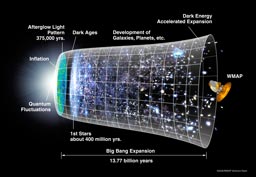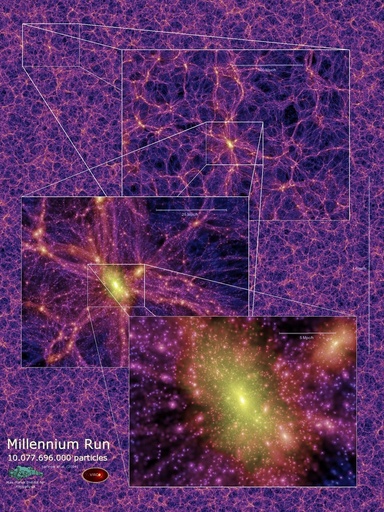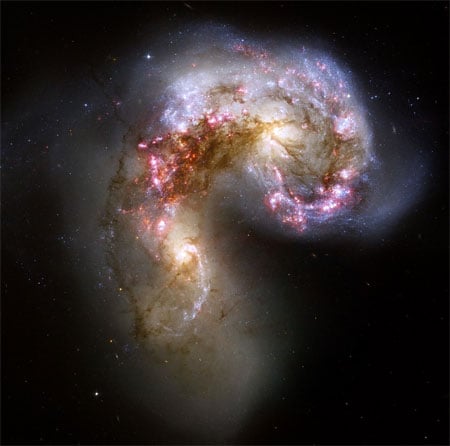Category Archives: Science
Space elevator may kill
Rerouting the brain
Portable skin cancer treatment
Blue dyed jeans fight cancer
Maths wins the lotto?
Space elevator challenges
When Galaxies Collide
Smacking kids is good for them
Out of body experiences
Teleportation II
Ig Nobel Prizes Tonight
Drink all you like!
Cell Movement
Our Lady of Discord makes the Solar Pantheon
The distant world whose discovery prompted leading astronomers to demote Pluto from the rank of “planet” has now been given its own official name.
Having caused so much consternation in the International Astronomical Union (IAU), the object has been called Eris, after the Greek goddess of discord.
http://news.bbc.co.uk/2/hi/science/nature/5344892.stm
All hail Discordia!
How Big is the Universe and what does it look like?
There are loads of ways of visualising the universe – through radiation, dark matter, gravitational fields, distribution of visible light etc. And then there are the times as which the universe is visualised – at the beginning, as it grows, now and projected into the future. String theory makes for even more different ways of looking at it as multiple concurrent universes can be visualised and there are loads of thing you can (thoeretically) do with the fabric of space to visualise it differently yet again. The images obtained are very compelling and diverse indeed.
NASAs WMAP program uses microwave images

and has made a time line of the universe and it’s expansion

They have many more images on their site.
The Sloan Digital Sky Survey
Simply put, the Sloan Digital Sky Survey (SDSS) is the most ambitious astronomical survey ever undertaken. When completed, it will provide detailed optical images covering more than a quarter of the sky, and a 3-dimensional map of about a million galaxies and quasars. As the survey progresses, the data are released to the scientific community and the general public in annual increments.
They have a lot of datapoints on their sites and quite a few images.
But Spaceref had the only picture I could find with everything they’d mapped on it in one go.



More of their images are to be found here
First supernova seen in real time
Yup they had three full sensors looking at it when it went boom – the event started in Februari.
The Register (which has a nice link to an animation)
Ethical Stem Cells
Professor Robert Lanza, medical director of Advanced Cell Technology (ACT) in Massachusetts, US, and lead author on the paper, said: “We have shown for the first time you can create human embryonic stem cells without destroying the embryo and thus without destroying its potential for life.”
This is done by removing single cells from the embryo.
There’s some controversy about how Professor Lanza conducted his research to find this out and he claims the baby is undamaged, but I have no idea how redundant cells are in the emryonic stage.
At least something is being done to allow cancer sufferers the hope of research in this line of medical science from US clinics.
Dark Matter Proved
Planets sorted out
The new definition of a planet is:
A planet is a celestial body that (a) has sufficient mass for its self-gravity to overcome rigid body forces so that it assumes a hydrostatic equilibrium (nearly round) shape, and (b) is in orbit around a star, and is neither a star nor a satellite of a planet.
Pluto no longer a planet or…
Depression treated in hours
Dimensions
Dimensions are weird things. There are a whole load more of them than the 3 (length, height and depth) most people are used to, such as dimension number 4 (time) and 0 (the dot infinity).
This page shows in an easy manner how we can understand 10 dimensions. It does however end with the contention that there are only 10 dimensions, but Stephen Hawking says there are 11, so we might not be getting the whole story…

